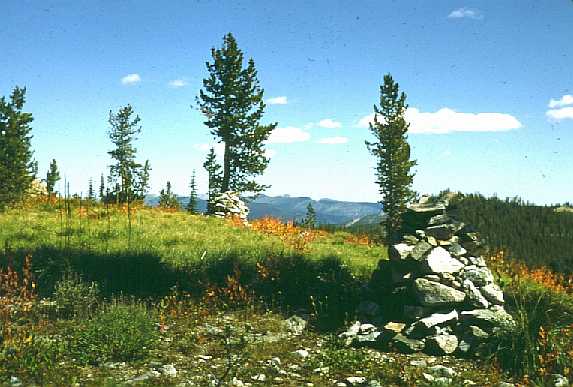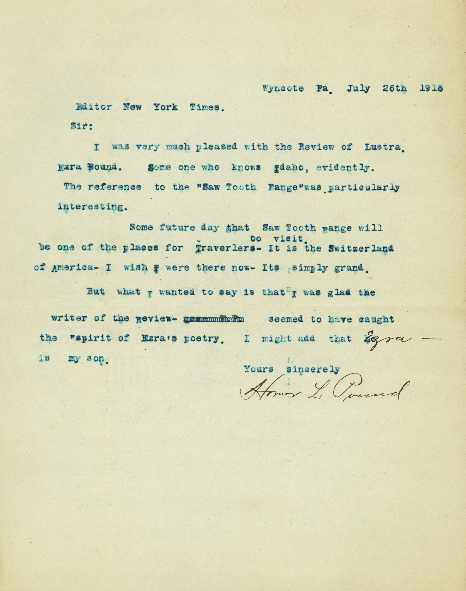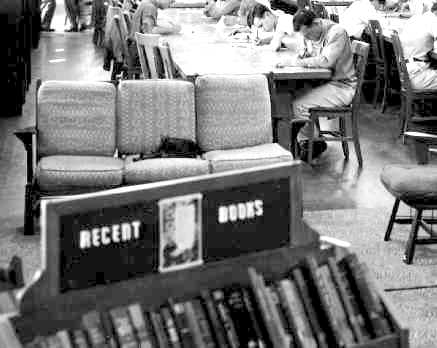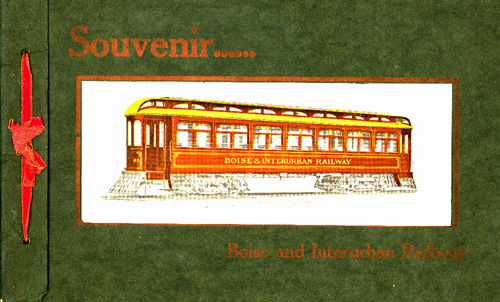
"Mail call, mail call." These words have long caused the heart of many a homesick wayfarer to quicken in anticipation. The conveniences of our modern postal system were unknown to early travelers passing through the rugged Idaho frontier. If old legends are true, ingenious journeyers devised their own system of communication at "Indian Post Office," located in the northeast extremity of Idaho county on the historic Lolo Trail.
According to one old story, Indians conveyed messages by piling the stones from two rock cairns in various ways. Another legend claims that the high, windswept knob in the Clearwater Mountains was a known landmark where prospectors, warriors, and hunters left messages. Today, in the tradition of the old legends, people leave notes, postcards and business cards in plastic jars tucked inside the rock cairns for others to discover.
Being familiar with the local folklore, the site was aptly named "Indian Post Office" in 1886 by Wellington Bird's construction crew, while hacking a trail through the dense forest growth and steep terrain of the Clearwater Mountains. Bird had been hired by the US Department of the Interior to construct a road connecting Lewiston, Idaho to Virginia City, Montana so that Lewiston could share in the lucrative business of transporting gold rush supplies to Montana. Bird's crew found the passage a formidable obstacle, much as did Lewis and Clark when they crossed the Lolo Trail in 1805 and again in 1806.
Traveling conditions were much easier 146 years later when Kyle Laughlin, of Moscow, Idaho set out on a road trip with his son, John, and friend, Oliver Espe, to Jackson Hole, Wyoming by way of Lolo Pass. "With a minimum of planning, the three of us set out at 6:30 A.M. on Tuesday, August 7th." Kyle, a professional photographer, who was particularly talented at documenting his travels with photos of historic places, spent the first day taking pictures from high mountain vistas along US 95 and the winding mountain road that follows the former Lolo Trail. Laughlin took this photo of "Indian Post Office" on the second morning of their trip after spending the night at Howard's Camp, named after General Howard who stayed there with his men on August 4, 1877 while pursuing Chief Joseph and his band of Nez Perce across the Lolo Trail into Montana. Laughlin notes in his journal that Howard's Camp "is a beautiful small green meadow on the north side of a saddle. At the campsite which is about ¼ mile off the road Howard Creek flows in a NW direction. It is a very small creek of clear, cold water. Here two shelter frames had been made by hunters and we used one for our beds."
Kyle's widow, Marguerite Laughlin, donated this photo along with approximately 13,000 other negatives and slides, as well as prints, scrapbooks, journals and notes pertaining to Kyle's lifelong interest in the natural history of the Northwest, his special passion for wildflowers, and a chronicle of the lives of family and friends. This important collection is housed in the Historical Photograph Collection of Special Collections and Archives at the University of Idaho Library where the reading room has been named after Kyle and Marguerite Laughlin.
Photograph selected, and text written, by Karen Hertel, Historical Photographs Curator.
Caption: Indian Post Office on Lolo Trail, August 8, 1951. #99-030-029, Historical Photograph Collection, Special Collections and Archives, University of Idaho Library.

Many libraries have suggestion boxes, but few have as consistent a history as that at the University of Idaho Library. First established in 1959, by 1978 its box-on-a-bulletin-board shape had been transformed into a self-standing hexahedral container raised on one point, otherwise known as the Cube. The Cube (newly reconstructed in oak in 1991) continues to accept suggestions, comments, and accolades from which a selection is made for publication in nearly every issue of The Bookmark since 1961.
Although some suggestions or comments are repetitive or cyclical (temperature control, noise, photocopiers, newspaper timeliness, food and drink, library hours, the end of semester shelving backlog, and fines) the Cube received a number that were either unique or deserved a unique answer. Harsh at times, but never patronizing, the Cube is clearly a suggestion box with an attitude. Some examples:
NOISE: I would certainly appreciate if the persons who are responsible for answering the telephone on the second floor would please answer it. (1962)
ANSWER: Ah, yes! This was our popular phone -- the first three digits of the number were the same as those of a girl's dormitory, a fraternity, a doctor's office and a tavern downtown. If, when dialing from campus, you forgot to dial the prefix for these off-campus numbers, you called us. Eighty per cent of the incoming calls were wrong numbers. We learned more interesting things this way. Life has been a bit dull on the second floor since the number was changed. But we trust you are now enjoying the quiet.
COPY MACHINE: I was about to compliment you on the new copy machine, but when it robbed me of a dime, I decided to make both a compliment and a complaint. Last week I put in a dime and my copy came part way out; then it reversed and went back into the machine. It took me two dimes to get the copy. (1965)
ANSWER: Blessed are they that mourn, for they shall be comforted. If this happens again see the Loan Librarian.
MULTIPLE CARD CATALOGS: Put a card index for that floor on each floor in addition to a master on the main floor -- or on elevator. (1968)
ANSWER: You are treading in the realm of utopian expenses. Such a project would cost us close to $100,000. The elevator, we freely confess, would give us a lift - but is this trip necessary?
CLOSING: Why not close [the] library at 11 pm instead of 10! (1971)
ANSWER: "If money go before, all ways do lie open." (The Merry Wives of Windsor)
DOGS: Those people who bring their dogs to the library and then leave them outside unsupervised and unchained should be bludgeoned beyond recognition and left by the side of the road to rot. REPEAT offenders should be dealt with more harshly. (1981)
ANSWER: You sound as if you would be glad to do the bludgeoning. I hope you're not suggesting that the library staff be issued cudgels and be assigned to making rounds outside the building. We have enough to do on the inside -- evicting the eaters and drinkers, hushing the children and babies, reminding students not to sing along with the records in the Browsing Room, separating lovers, and answering the suggestion box. The dogs are lucky you're on their side. Dog owners beware!
GATES: Why are the gates that everybody is forced to walk through at the same height as my gonads? Are you trying to increase the size of the University Choir's soprano section? How about raising the gates a foot or two? That way they'll hit me in the belly. Better yet, eliminate the damn things! I feel that the gates are a health hazard to a majority of the men at this library. Sincerely, Bruised. (1983)
ANSWER: Dear Gentle, but Bruised, Reader: Miss Manners deplores
the public airing of such private matters. However, she has purchased a
tape measure and will soon be stopping men on a random basis (of her choice)
to make appropriate measurements. You don't say how tall you are. Considering
the variations in the height of men, women, and children using this library,
the gate could strike one person in the mouth and someone else in the kneecaps.
Shall we install 10 gates of varying heights to accommodate everyone?
You'll have to accept the gate, part of our book theft detection system,
and walk slowly. Why not push open the gate with your hand instead of your
. . . ? Not having the book detection system would be a health hazard to
the library.
SUGGESTION: Maybe your "library" (and I use the term loosely) would be better appreciated if the person(s) who write rebuttals to suggestions would get up on the right side of the bed for once and quit being so damn rude! I thought libraries were built on the concept of helping people, not tearing them down. How rude can you get? (1984)
ANSWER: The cube arises at 4am, puts in 5 miles, eats Wheaties and arrives with a smile. Then the box is opened, and the day is spoiled. Most questions deserve (and get) a straight answer. People who get grouched at are those who have a gripe, but aren't willing to make any effort themselves. An example is the numerous complaints about socializing and noise in the study areas. If the people who were bothered would speak up directly, the Library would be happy to shush those who didn't respond. Same way with the person who wanted more telephones installed because many people were holding long conversations. Is it rude to be a little assertive when others are inconsiderate? Most of the time they're unaware and cease and desist when made aware of the problem.
SARDINE: I feel like a sardine after using your microfilm readers. I have nothing against computers (even own one) but resent being crowded out. I have a good idea: why don't you buy new readers of smaller size! (I would like to buy one of the old ones!) (1985)
ANSWER: You don't mean sardine, you mean "Microfish." Ha Ha.
The big gray Recordaks were one of the most successful and best microfilm
readers ever made. They were durable and easy to use, which is why (I guess)
Kodak stopped making them in favor of cheap junk which broke down all the
time, and had to be replaced regularly. You can be sure that we'll continue
to keep them until we can't scrounge parts for them anymore.
P.S. Pay no attention to the terminals -- computers are a passing fad.
People will soon tire of them.
FAN: I've always wanted to see a note written by me on this box, but since I never have a complaint, I never get to write. However, this is my last semester here and I'm wondering if you could possibly post this one just for me. Thank you, A Fan. (1986)
ANSWER: Sorry, I can't do that. It's against library policy.
QUESTION: Why are you so LAME? (1989)
ANSWER: Only got one leg!
BUGS: Enclosed is a very large bug that I found on the 3rd floor. You really should control your pest problem. (1989)
ANSWER: The animal in question is a Hemipterian, Buggus squashus. Since it makes its living sucking plant juices, only Idaho (couch) potatoes need fear it. If I wanted to control my pest problem, I'd stop up my slot.
CLOCKS: Where are the clocks, we need more clocks. How do we know when to leave and go to class without clocks? Put up more clocks!!! (1993)
ANSWER: You have now reached that stage in life where Mommy no
longer gets you up for school, and bells and teachers don't signal you
to move from one class to the next. Between now and when the nursing home
attendant rolls you into the lounge to watch Wheel of Fortune, you
are responsible for your own schedule as an autonomous human being. Deal
with it: Buy a watch.
P.S. We plan to put in some more clocks after all the moving is done
and we check the sight lines. But because most of the study areas will
be located in small groups between the stacks, many won't be in sight of
a wall clock.
RETURN: Oh Great and Wise Cube! I am a returning student after almost twenty years and am heartened to find that you still sagaciously enlightening the masses in their quest for knowledge and wisdom. Many things have changed but you are an anchor in this sea of entropy. I anxiously await the morsels that will appear upon your surface. (1997)
ANSWER: Appreciation of things cultural obviously improves with age.
Caption: The Cube, 1988. PG 34#43-3-15, Historical Photograph Collection, Special Collections and Archives, University of Idaho Library.

While the oldest book in the library is a mere 500 years old, the oldest manuscript document in the collection is eight times older. It is a representative example of a Babylonian clay tablet.
Older than dirt, one might say, save for the fact that it is dirt, or rather clay. This small (only an inch and half tall) pillow-shaped object still holds the marks made by the scribe's reed tool. The cuneiform characters retain their imbedded meaning which is neither literary nor narrative, but records only the receipt of temple provisions. A utilitarian object with a spiritual purpose.
The invention of writing, giving birth to libraries and archives, depended on finding a reliable recording media. Clay, malleable when moist and firm when dry, was well suited to the recently urbanized inhabitants of the oasis cities surrounded by desert. A settled community, using pots for cooking and storage, found clay an excellent medium for the new skill. The new tools fostered authenticity and legitimacy of documentation.
One tablet in isolation (although the University of Idaho Library holds two), like one page in a large library, fails to give a sense of context. There are, some say, about 500,000 known clay tablets from Mesopotamia, with many more still buried in future archaeological sites. One tablet is but a memorial, a symbol of one of the greatest achievements of the ancient world: writing.
It is also an exemplar of the durability of the written word; a durability that is increasingly questioned as text, such as this, is made digital. At present there is no electronic storage device that can compare with this clay tablet for longevity.
Caption: Babylonian clay tablet, ca. 2400 b.c.e., Special Collections and Archives, University of Idaho Library.

In the New York Times Book Review of July 21, 1918, the unidentified reviewer of Ezra Pound's newly published Lustra took special note of Pound's Idaho heritage: "Something over thirty years ago, when Idaho was still a Territory, and the rush to its gold fields was almost as eager and turbulent as had been in the California of two generations before, when the shake-roofed cabin of the miner and stock raiser had only recently succeeded to the teepee of the Indian, Ezra Pound was born in one of the deep-cut valleys, beneath the fantastic skylines of the Sawtooth Range."
Pound's father, Homer, had arrived in the rough mining town of Hailey, Idaho as the government land recorder bringing his new wife from Washington, D.C. She gave birth to Ezra in October 1885 and took the sickly child away, never to return, in 1886. Ezra Pound went on to notoriety and acclaim as an American reinventing poetry in Europe.
The reviewer noted, "It is a long trail, indeed, from such a far outpost of civilization to post-medieval France and Italy, via the sophisticate circles of the art world of modern Paris and London...." After summarizing, quoting and commenting on the published poems, he concludes by again comparing Pound's reliance on a European past with his brief-as-it-was pioneer heritage: "[It is] a far cry indeed from the virgin Idaho Valley, under the shadow of the Sawtooth Range, to this soil, deep-mulched in tradition." And adds, "Ezra Pound has made a dramatic flight, whose significance we as yet scarcely grasp. He is still a young man, his flying days are far from over. One wonders will he ever wing his way, burdened as he is with the spoil of antiquity, back to the wilderness?"
One appreciative reader of this review was the proud father, who kept scrapbooks of his son's press clippings. Homer Pound, now assistant assayer at the U.S. Mint in Philadelphia, dashed off a brief note of appreciation to the editor of the book review section. "I was very much pleased," he wrote. "Some one who knows Idaho, evidently. The reference to the 'Saw Tooth Range' was particularly interesting."
He then predicted, "Some future day that Saw Tooth range will be one of the places for travelers to visit. It is the Switzerland of America. I wish I were there now. Its simply grand."
Homer's enthusiasm for Idaho's scenery matched his appreciation of his son's literary accomplishments. This was not the first time that he had responded to newspaper mentions of his son's poetry. Ultimately, his vision of an Idaho mountain resort came to fruition in the creation of Sun Valley, near Hailey, by railroad executive Averell Harriman within two decades.
Supplementing the University of Idaho Library's Ezra Pound Collection, a memorial to Idaho's native-born poet, this Homer Pound letter was acquired through the financial support of the Library Associates of the University of Idaho.
Caption: Homer Pound letter, July 26, 1918, Special Collections and Archives, University of Idaho Library.

"Puss in Books" might be an appropriate title for this image of a pussycat napping in the midst of a large group of male students taking a special exam in the library's main reading room a half-century ago. Librarian Richard C. Beck, now retired, reminisced about the era of library cats in his addendum to R. D. Hook's "The University of Idaho Library: A History" (1986):
Some old timers tell stories about the cats in the library. Lee [Zimmerman, Head Librarian] was an officer in the American Feline Society. He and Rhoda had several cats at home, and people sometimes left stray cats on their doorstep. There were cats in the library too, but they were not Lee's cats.
They belonged to a campus character named Gotfred (Fred) August Skog of Stillwater, Minnesota. He had worked on the construction of the Administration Building in 1907, and President Maclean kept him on as janitor. He stayed on to become an integral part of the University, much beloved by students. He earned the honorary title of "Dean" from the students and retired in 1952 as Head Janitor, Emeritus.
He had the cats in the basement to catch mice, but Lee had holes made into the wall so they could come into the library if they wanted. So staff would come to work and find cats on their desks and elsewhere. Periodicals Librarian Louise Slade got pretty upset when the cats did their business on her piles of newspapers, and Cataloger Stan Shepard got in "trouble" when he tried to throw the cats out of the library.
The cats, along with the card catalogs, are long gone. The new book stands, however, are still with us and in use today. And the library still has mice.
Caption: Main reading room, UI Library, 195-, #1-201-26, Historical Photograph Collection, Special Collections and Archives, University of Idaho Library.

Early-day Boise's transportation problems were to be solved by extending a branch line to Nampa to meet the transcontinental main line in 1887 after a five-year delay. By 1891, electric trolleys were seen as necessary and added to the mix. By 1902, both Nampa and Caldwell attempted to displace Boise as the region's economic center.
To capitalize on this effort, businessman Walter E. Pierce of Boise incorporated the Boise and Interurban Railway to connect the commuters of the three towns. In this souvenir promotional publication (1907) he proclaimed, "Under the general plan of the company every point offering paying business or capable of being developed to the profitable stage will be reached and the Boise and payette Valleys will be made tributary to Boise, as the very heart of the city can be reached in a short time, which will permit [the] business man and employees living anywhere along the line to perform their daily duties in the city."
The tracks of the interurban railways throughout the country and particularly in the West were ripped up and the cars shipped overseas as riders flocked to the freedom of automobile and bus manufacturers conspired to destroy the rail links. In the late 1990's, light interurban rail service is returning to the Boise Valley in the hopes of forestalling the paving of more real estate in the fast growing region.
Purchase of Boise & Interurban Railway Co. Ltd.: Souvenir ed., showing scenery along the route of the Boise and Interurban Railway, Boise and Caldwell (1907) was made possible by funds provide by the John Calhoun Smith Memorial Fund.
Caption: Boise & Interurban Railway car, colored lithograph pasted to the cover. Boise & Interurban Railway Co. Ltd.: Souvenir ed., showing scenery along the route of the Boise and Interurban Railway, Boise and Caldwell. (1907). Day-Northwest Collection, Special Collections and Archives, University of Idaho Library.
| [U of I Library] [Catalog Search] [U of Idaho] |
|
Special Collections & Archives University of Idaho Library PO Box 442351 Moscow, Idaho 83844-2351 USA (208) 885-7951 |
|
© Copyright 2002 University of Idaho Library |

